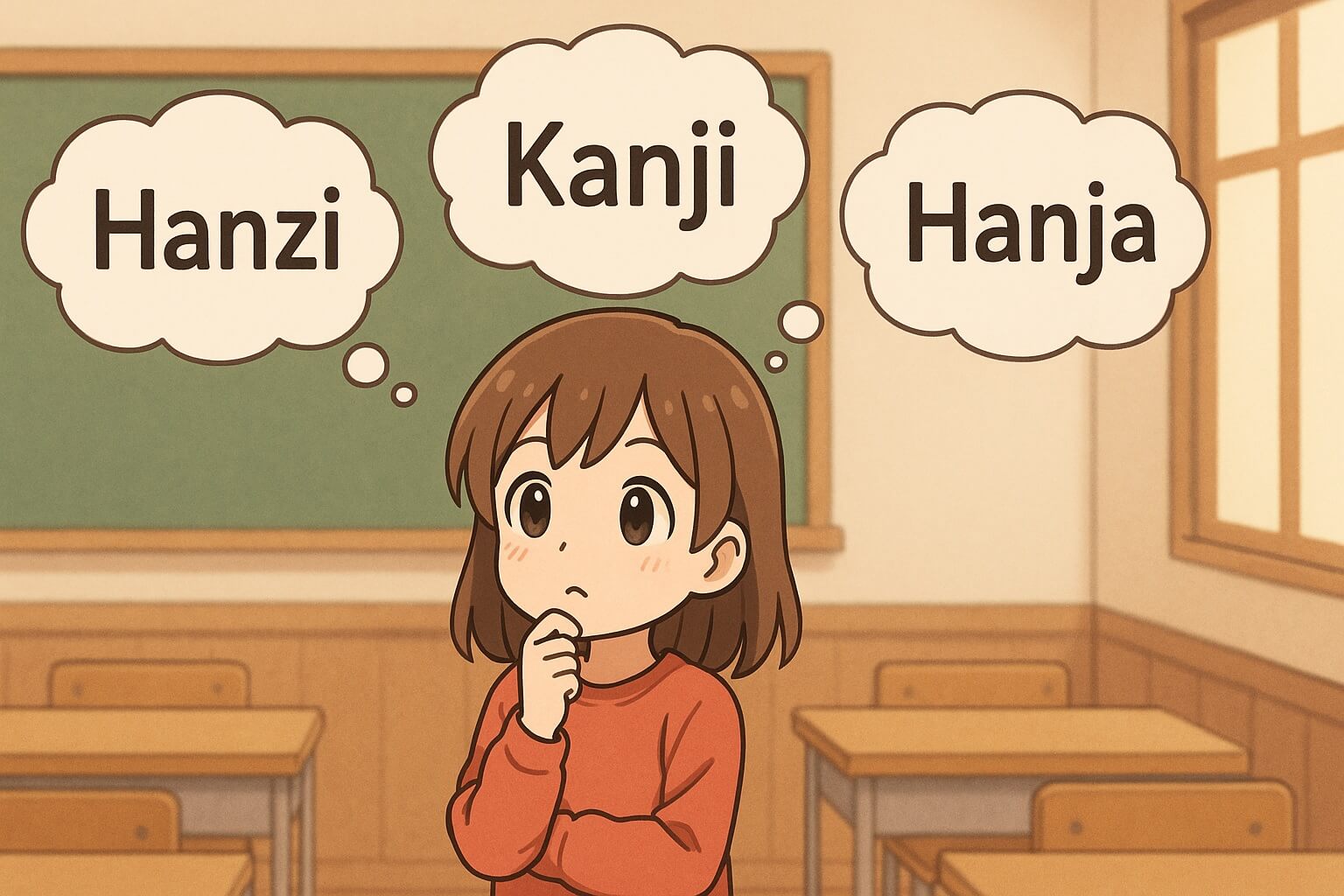
Reading Chinese, Japanese, and Korean for the first time, it’s easy to assume they all share a common origin—and to a degree, that’s true. Hanzi (Chinese characters), Kanji (Japanese characters), and Hanja (Korean characters) all trace their roots to classical Chinese. But while they may look similar, each has evolved uniquely in form, function, and meaning.
So why are they so different yet so similar? Let’s explore.
The Common Origin: Classical Chinese
All three scripts originated in ancient China, where Chinese characters—Hanzi—were developed over thousands of years. These characters spread to neighboring regions through trade, conquest, diplomacy, and cultural exchange. Japan and Korea adopted these characters into their own early writing systems, since they lacked native scripts at the time.
This is why you’ll often see the same character across Hanzi, Kanji, and Hanja. But that’s also where the similarities begin to diverge.
Hanzi: The Original
Hanzi are the original Chinese characters and remain in use today across Chinese-speaking regions. There are two major systems:
- Simplified Hanzi (used in mainland China)
- Traditional Hanzi (used in Taiwan, Hong Kong, and Macau)
Simplified characters were introduced in the 20th century to improve literacy, reducing the number of strokes in many characters. Traditional characters retain their original complexity and aesthetics.
Words in Chinese are typically formed using Hanzi, with each character usually representing a single syllable and carrying its own meaning.
Kanji: The Japanese Twist
Japan borrowed Hanzi around the 5th century, but because Japanese and Chinese grammar differ significantly, Japan adapted the characters into Kanji with their own layers of native grammar and pronunciation.
Here’s where it gets interesting:
- A single Kanji often has multiple readings: On’yomi (Chinese-influenced reading) and Kun’yomi (native Japanese reading).
- Japan also created original characters (kokuji) that don’t exist in Chinese.
- Kanji are used alongside two other scripts—Hiragana and Katakana—forming a unique three-script system.
Kanji became deeply integrated into the structure of the Japanese language and continue to play a key role in written Japanese today.
Hanja: The Korean Legacy Script
Korea adopted Chinese characters even earlier than Japan, around the 4th century. These characters, Hanja, were used as Korea’s main script for centuries. But unlike Japan, Korea eventually created its own phonetic writing system: Hangul, developed in the 15th century.
Hangul is now the primary script in South Korea, celebrated for its logical design and phonetic clarity. Hanja, while no longer part of daily use, still appears in academic texts, historical documents, and legal contexts.
Key points about Hanja:
- Korean pronunciations of characters differ from those in Chinese and Japanese.
- Hanja was mainly used to represent Sino-Korean vocabulary.
- Most modern Koreans can recognize some Hanja, but few can write them fluently.
So, Why the Differences?
- Language structure: Japanese and Korean grammar are completely different from Chinese, so characters had to be adapted accordingly.
- Historical reforms: China simplified its script, Korea invented a new one, and Japan modified the use of borrowed characters.
- Cultural identity: Over time, each region shaped the script to reflect its language, needs, and identity.
And Why the Similarities?
Because they all trace back to the same source: ancient Chinese characters. Shared cultural heritage, Buddhist literature, and centuries of intellectual exchange helped preserve many character forms and meanings across East Asia—even as pronunciation and usage changed.



